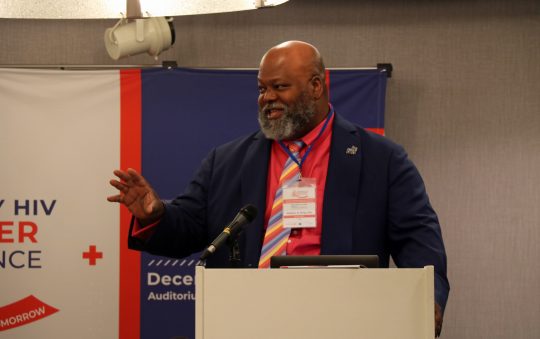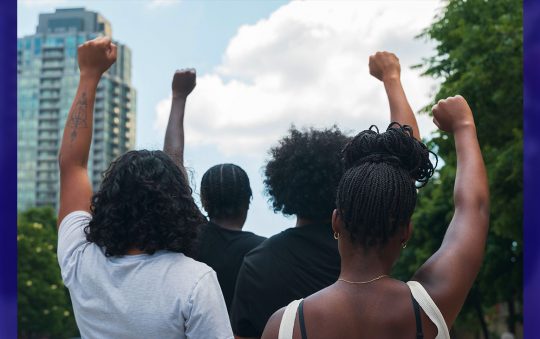
In 2011, Science Magazine’s “Breakthrough of the Year” was the discovery that antiretroviral drugs were a game changer in HIV prevention. The development of treatment as Prevention and Pre-Exposure Prophylaxis (PrEP) ushered in the concept of ending the HIV/AIDS epidemic. By combining effective treatment for people living with HIV with simple and easy biomedical prevention for people at risk of HIV infection we can eliminate HIV transmission and HIV acquisition, thereby breaking the back of the epidemic.
During the 2018 State of the Union address, Trump announced a goal to end the AIDS epidemic in the United States by 2030. While HIV/AIDS activists and communities most impacted by the HIV epidemic—Black, Latino, LGBTQI, and women of color, have plenty of reasons to confront any announcement from the administration with skepticism setting a goal to end the HIV/AIDS epidemic in eleven (11) years should be celebrated. But like all efforts to accomplish a goal, the success of this one is dependent on the design and execution. As they say, the devil is in the details.
The underpinning of the administration’s plan is the recent surveillance data that shows 50 percent of the US epidemic is in 48 counties, Washington D.C., and San Juan, Puerto Ricco, and seven states that have a substantial rural population living with HIV. And 60 percent of the Black HIV epidemic lies within these jurisdictions. There is no question that focusing on the jurisdictions with the highest HIV burden makes sense. The question is will focusing on geography alone— the where—unlock the mystery of ending the HIV epidemic. Can we end the HIV/AIDS epidemic without also focusing on the other W’s—Who, what, and when.
Who:
43 percent of new HIV cases are among Black people. Black men who have sex with men represent 80 percent of the Black epidemic, and we don’t even have accurate data on the impact for trans people, but it’s estimated that more than half of Black transwomen are living with HIV. Women, particularly women of color represent one of the fastest growing HIV populations in the country. If the plan does not explicitly address the unique needs these populations, it will fail.
What:
HIV is virus. We finally have the biomedical tools to defeat the virus. That is easy and simple. But the American HIV epidemic is anything but easy and simple. Social determinants of health—poverty, homophobia, transphobia, xenophobia, sexism, racism, fear and mistrust— drive our epidemic.
Insufficiently addressing the who and the what of the HIV epidemic has led to the HIV health disparities we see today. Only 46 percent of Black people who know they are living with HIV remain in regular care. Black men have lifetime HIV risk of 1 in 20, and for Black gay men, the risk is 1 out of 2. The lifetime risk for Black women is 1/48, and more than half of trans people living with HIV are Black. People living in the South (where the majority of Black Americans live) are more likely to be diagnosed with HIV over the course of their lifetime than other Americans.
In the haste to get this program off the ground, the input of community organizations who serve the Black community has been overlooked and ignored. While there is a dire need for urgency, if the most impacted communities and individuals are not intentionally centered in the planning and execution of the plan, this opportunity will be squandered.
Among others, Black community leadership, HIV/AIDS activists and advocates, health departments, and other stakeholders must be convened across and within the targeted jurisdictions to develop the plan and assure that the administration understands the implications of this plan. Leaders and stake holders representing those bearing the greatest HIV burden need to mobilize, engage, We are mobilizing and engaging Black leaders communities across the country to build our power to ensure that we not only have a seat at the table, but that it’s OUR table. Our plan includes working with entities that shape the health of Black communities: health departments, federally qualified health centers, and the Centers for AIDS Research. This is an issue of equity and racial justice, and we are going to hold the Trump Administration accountable. We are here to end the epidemic in the only way possible: by recognizing and addressing the structures that drive the epidemic, uniquely and unapologetically.
Copeland is the President and CEO of the Black AIDS Institute (BAI). BAI is the only national HIV/AIDS think tank focused exclusively on Black people. Their mission is to stop the AIDS epidemic in Black communities by engaging and mobilizing Black institutions and individuals in efforts to confront HIV. To stay connected with their work go to www.BlackAIDS.org and follow them on social media.







